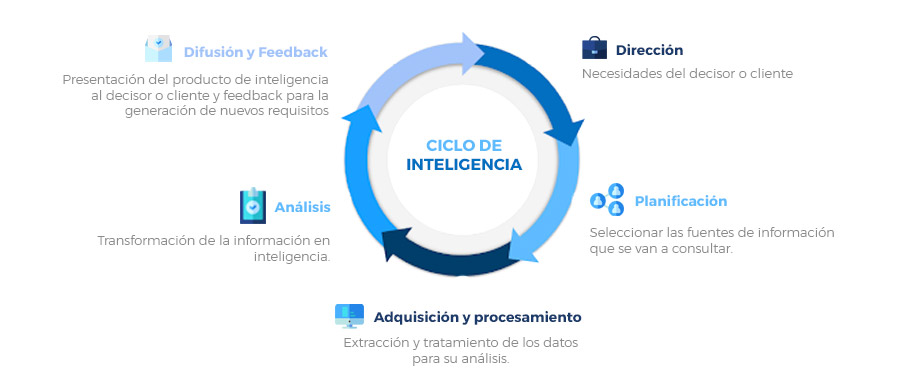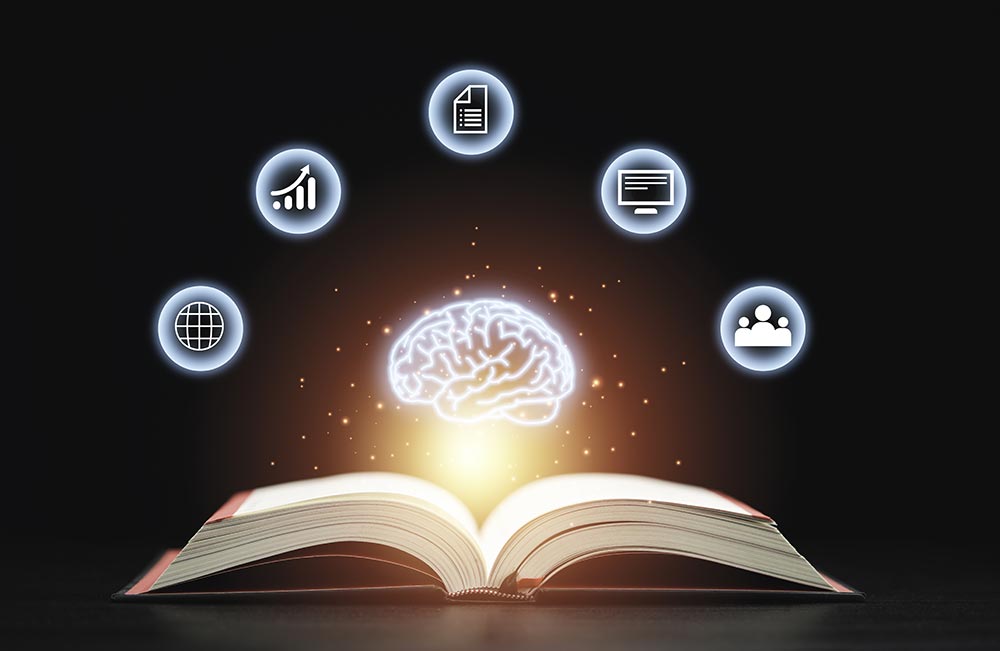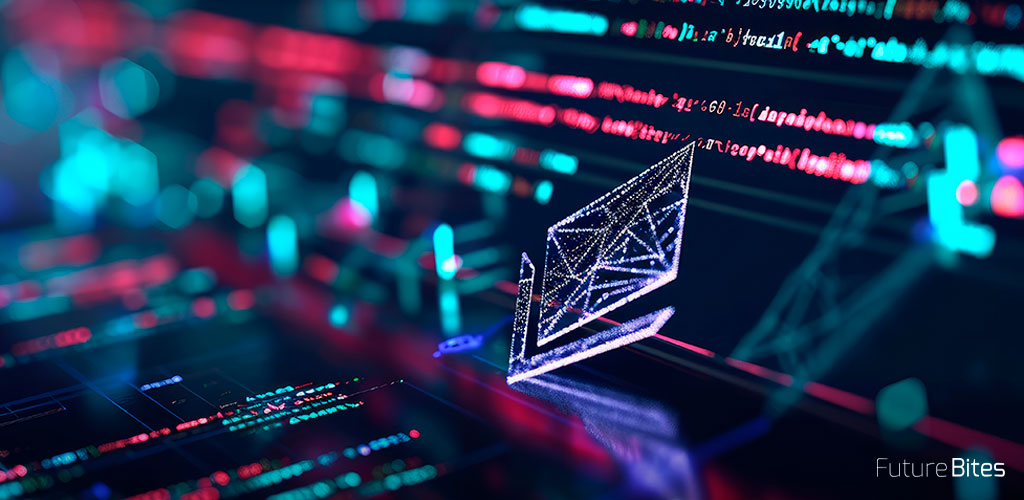In this Competitive Intelligence chapter, we will discuss the structure of a Competitive Intelligence report and how the fictitious technology company SENS (acronym for Simulation and Training Systems) can benefit from the results of the work done by its Multidisciplinary Intelligence Unit.
By means of an adequate research methodology and the appropriate technological resources, uncertainty can be reduced, decision-making can be facilitated and a competitive advantage can be developed. In order to detect evidence of risk and areas of opportunity to help decision-making, it is important to generate a good working methodology based on the intelligence cycle.

When the needs of the management or the client are transmitted to the work team, in a detailed and hierarchical way, planning begins. In this phase, the sources of information to be consulted and the analysis tools to be used are selected.
A good intelligence report benefits from multidisciplinary work and the use of advanced technology to facilitate the gathering and analysis of information. To complete the cycle, the content has to be transformed into intelligence for dissemination. In this phase, production is as important as the presentation of the report, based on a good structure that facilitates the understanding of the analysis content.
Structure of the Competitive Intelligence Report
An intelligence report has to have these sections:
- Tableof contents: facilitates the drafting of the report and helps to show the relevant sections.
- Executive summary: this is essential in an intelligence report. It will succinctly set out the content of the investigation. Nowadays, company decision-makers receive a multitude of reports and content on a daily basis. A well-structured summary of the analysed content that makes the report easy to read and understand is therefore considered essential to achieve the objective. The key is that, if they can only read the summary, they have all the variables and risks in mind to be able to make a decision.
- Analysis: this section will present the results obtained from the information analysis in an orderly fashion. It will be developed according to the need expressed by the decision-maker in the first stage of the intelligence cycle. The text will include the sources of information used and the analysis tools employed, explaining their usefulness and the content derived from their use.
- Annexes: help to deepen the content analysed. For example, if a list of companies is obtained in the analysis, it will be important to attach a file with all the companies listed and their managers. In case it is necessary to expand the analysis after the decision-maker has read it.
It is important to note that a competitive intelligence report can draw on numerous sources of information. Therefore, it is essential to have a good understanding of the decision-maker's needs in order to focus the effort on obtaining and analysing content related to the lines marked out. Infoxication is not only a problem in gathering and planning, but also in analysis.
Sources of Intelligence Information
An information source is any communication channel that provides us with data or information about the intelligence content to be analysed.

The main sources of information include:
- Open Source Intelligence (OSINT, from the abbreviation of Open Source Intelligence). It is information that is public and available to any user with internet access. Future Space offers a wide range of OSINT and Cyber Intelligence services based on proprietary technology and innovation aimed at obtaining and analysing intelligence to meet the business needs of decision makers and customers.
- Intelligence in the Deep and Dark Web (DEEPINT and DARKINT). Beyond open sources there is a lot of information on the internet that can be exploited. All content not indexed in search engines and available on any Darknet should be taken into account, as open sources do not always have access to it.
- Human Source Intelligence (HUMINT, Human Intelligence). Information that is obtained from another person and that assists in the achievement of the intelligence objective.
- Image Intelligence (IMINT). In this case, relevant information is obtained from images, e.g. by analysing an image uploaded on a social media profile you can determine the location of a subject under investigation.
- Signal Intelligence (SIGNT, Signal Intelligence). It consists of the study of signals and waves to obtain information.
- Geospatial Intelligence (GEOINT). The aim is to obtain information from an activity based mainly on the analysis of satellite images, the topographical exploration of the terrain or the acquisition of incidents reflected on a map.
The next chapter on Competitive Intelligence will further elaborate on the lines of work of the Intelligence Unit and the main Competitive Intelligence services.












